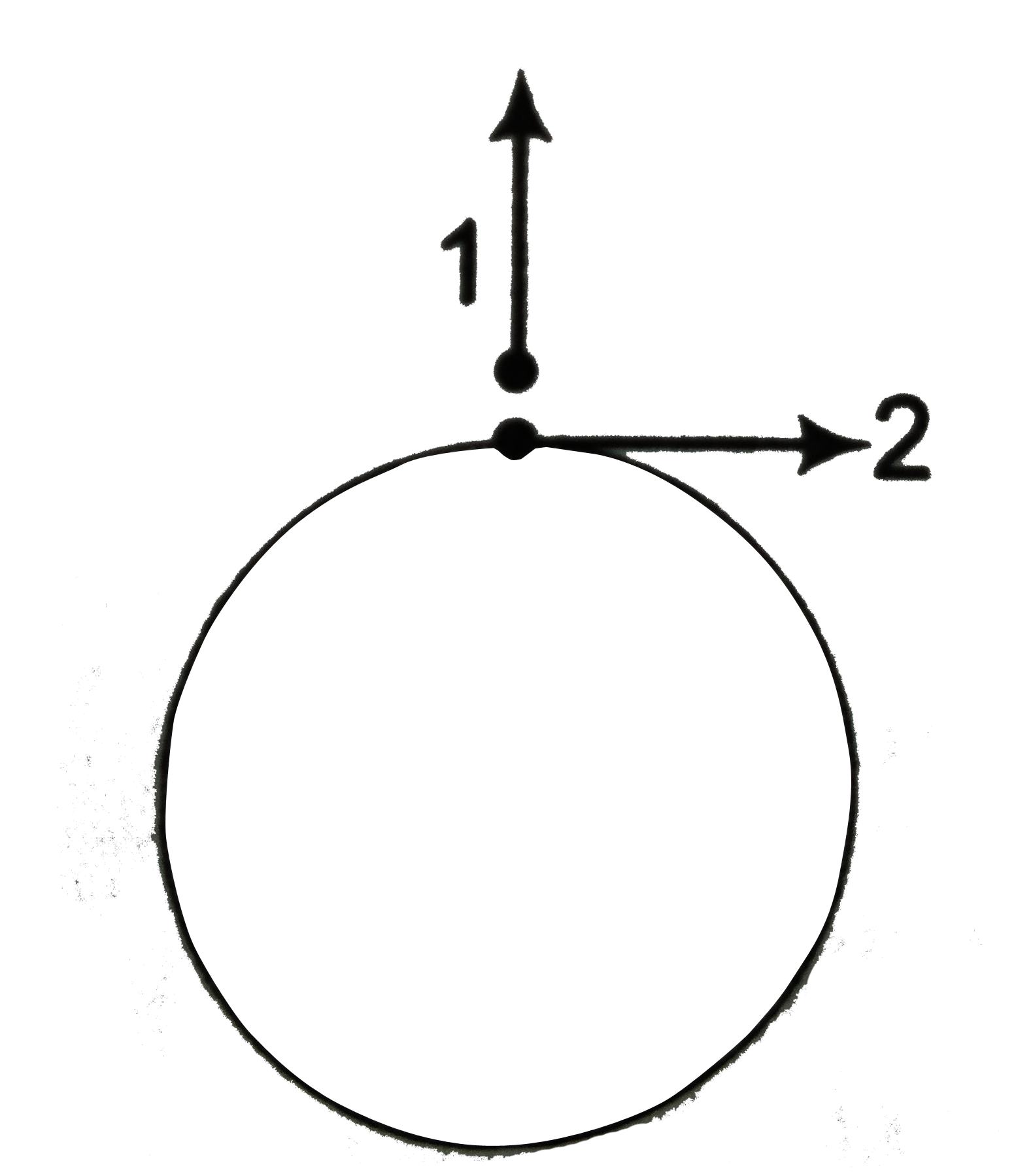When a particle is projected from the surface of earth its mechanical energy and angular momentum about center of earth at all time are constant.
Q. A particle of mass m is projected from the surface of earth with velocity v0 at angle θ with horizontal suppose h be the maximum height of particle from surface of earth and v its speed at that point then v is v0cosθ
v0cosθ
>v0cosθ
<v0cosθ
zero
The correct Answer is:C
To solve the problem, we will analyze the motion of the particle projected from the surface of the Earth, considering the conservation of angular momentum and the relationship between the initial velocity, height, and final velocity at the maximum height.
1. Identify the Given Values:
- Mass of the particle: m
- Initial velocity: v0
- Angle of projection: θ
- Maximum height from the surface of the Earth: h
- Radius of the Earth: r
2. Understand the Components of Initial Velocity:
- The horizontal component of the initial velocity is given by:
v0x=v0cosθ
- The vertical component of the initial velocity is:
v0y=v0sinθ
3. Apply Conservation of Angular Momentum:
- The angular momentum L about the center of the Earth is conserved. Initially, the angular momentum is:
Li=mv0rcosθ
- At the maximum height h, the distance from the center of the Earth is r+h, and the angular momentum is:
Lf=mv(r+h)
- Setting the initial and final angular momentum equal gives:
mv0rcosθ=mv(r+h)
4. Simplify the Equation:
- Cancel m from both sides (assuming m≠0):
v0rcosθ=v(r+h)
- Rearranging for v:
v=v0rcosθr+h
5. Analyze the Relationship:
- The term rr+h is less than 1 since h is positive (the maximum height is above the surface of the Earth).
- Therefore, we can conclude:
v<v0cosθ
6. Final Conclusion:
- The speed v of the particle at the maximum height h is less than the horizontal component of the initial velocity v0cosθ.
Answer:
The correct option is that v is less than v0cosθ.
- Mass of the particle: m
- Initial velocity: v0
- Angle of projection: θ
- Maximum height from the surface of the Earth: h
- Radius of the Earth: r
- The horizontal component of the initial velocity is given by:
v0x=v0cosθ
- The vertical component of the initial velocity is:
v0y=v0sinθ
- The angular momentum L about the center of the Earth is conserved. Initially, the angular momentum is:
Li=mv0rcosθ
- At the maximum height h, the distance from the center of the Earth is r+h, and the angular momentum is:
Lf=mv(r+h)
- Setting the initial and final angular momentum equal gives:
mv0rcosθ=mv(r+h)
- Cancel m from both sides (assuming m≠0):
v0rcosθ=v(r+h)
- Rearranging for v:
v=v0rcosθr+h
- The term rr+h is less than 1 since h is positive (the maximum height is above the surface of the Earth).
- Therefore, we can conclude:
v<v0cosθ
- The speed v of the particle at the maximum height h is less than the horizontal component of the initial velocity v0cosθ.
The correct option is that v is less than v0cosθ.
Topper's Solved these Questions
Similar Questions
When a particle is projected from the surface of earth its mechanical energy and angular momentum about center of earth at all time are constant.
Q. Maximum height h of the particle is
View SolutionA particle of mass m is projected with a velocity v at an angle of θ with horizontal. The angular momentum of the particle at the highest point of its trajectory is equal to :
View SolutionThe escape velocity of a particle of a particle from the surface of the earth is given by
View SolutionThe total mechanical energy of an object of mass m projected from surface of earth with escape speed is
View SolutionA particle is projected from a point P with a velocity v at an angle θ with horizontal. At a certain point Q it moves at right angles to its initial direction. Then
View SolutionA particle is projected from a point P with a velocity v at an angle θ with horizontal. At a certain point Q it moves at right angles to its initial direction. Then
View SolutionA particle of mass m is projected with velocity v at an angle θ with the horizontal. Find its angular momentum about the point of projection when it is at the highest point of its trajectory.
View SolutionA particle is projected with velocity v at an angle θ aith horizontal. The average angle velocity of the particle from the point of projection to impact equals
View SolutionTwo identical particles 1 and 2 are projected from surface of earth with same velocities in the directions shows in figure.

View SolutionA particle of mass m is projected upwards with velocity v=ve2, where ve is the escape velocity then at the maximum height the potential energy of the particle is : (R is radius of earth and M is mass of earth)
View Solution
